Dead Cells Guide - First Steps on the Sick Island. Part One.
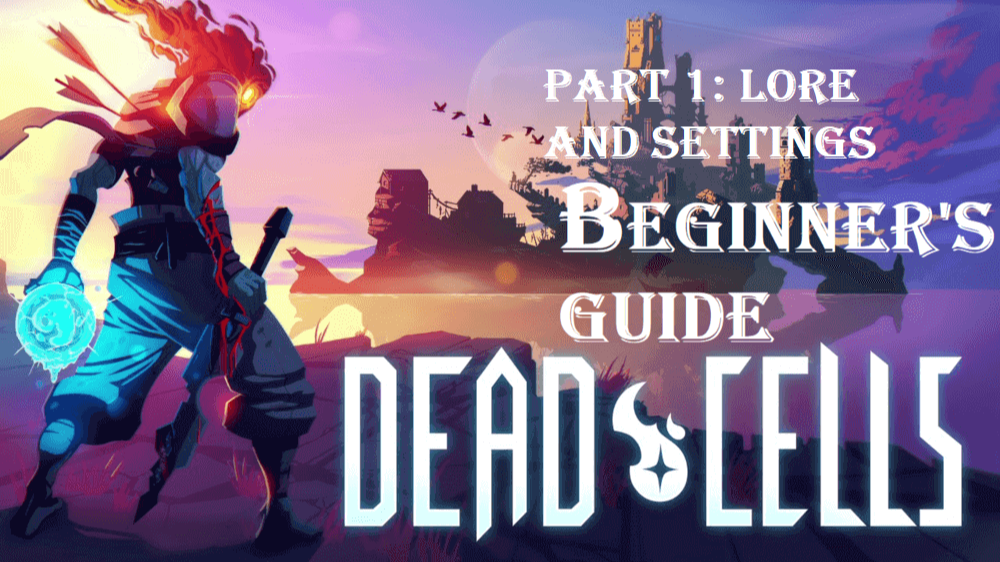
Dead Cells guide - First steps on the diseased island. Part One: the game's lore, Dead Cells genre affiliation, and initial settings
This article is written with the assumption that you don't know anything about Dead Cells, or know anything about the Rogue-lite and Metroidvania genres. The composition of this article resembles an iceberg: first there will be a description of the game's genres, then a brief recounting of the lore, then recommendations on the game settings, and in the second part the most important part - practical recommendations - awaits you.
Even though Dead Cells has been around for five years, the game has received dozens of patches for its usability and responsive controls. Dead Cells was, and still is, one of the most challenging games for the mass consumer. The situation is similar to Miyazaki's games: play, freak out, calm down, win, get excited, try again, lose, freak out - watch point one.
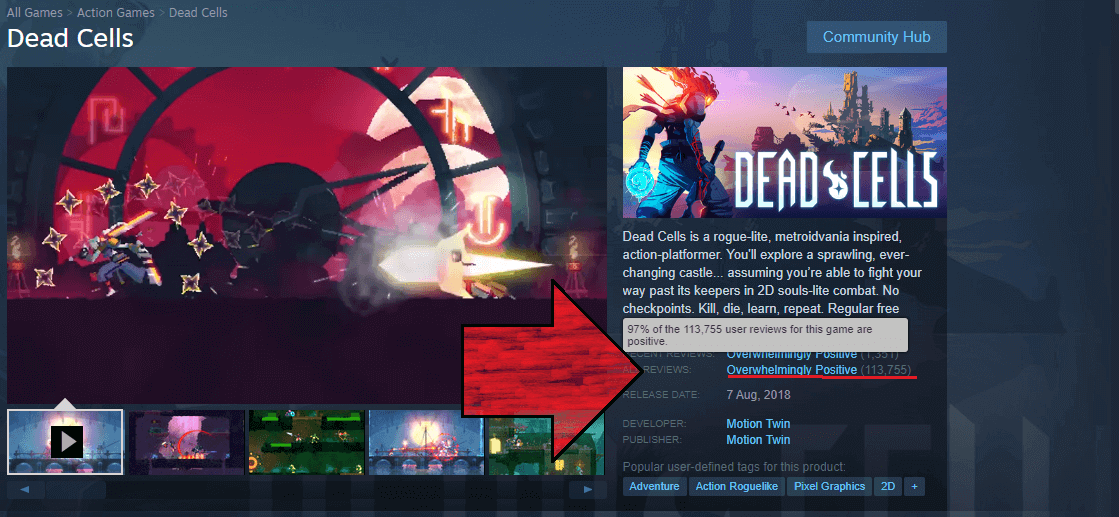
With Miyazaki's games, and with the Souls genre in particular, Dead Cells is not only about complexity, but also about storytelling. Dead Cells doesn't have a single storyline that spells out all the events. All the action just happens, the characters just appear without any preface about their past, and in the background now and then there are just hints of what's going on here in the first place. Dialogues, item descriptions, notes, and the main character's remarks help you absorb and understand what's going on. More about that in the second module. And now we will talk about the genre of Dead Cells...
What genre is Dead Cells? Or genres...
In layman's terms, Dead Cells is a second-person action-platformer, Rogue-lite with metroid elements. If you only understood "...with a second-person view..." from the previous sentence, then the next five paragraphs are for you. I'll put these five paragraphs in bold so you don't have to count them...
Those five paragraphs
Remember the Sonic games on the ancient NES game console? There, the blue hedgehog ran through a two-dimensional space from left to right, fighting enemies and jumping on platforms. To win, you had to jump cleverly and fight skillfully - that's an action-platformer, albeit a primitive one.
In Rogue-lite games you are on the way various items that repeatedly strengthen the main character throughout the attempt to pass the game. Each time the items fall out randomly, so the same game can be completed in different ways. The ultimate goal in Rogue-lite is not so much to defeat the final boss as it is to learn the game mechanics, find successful combinations of items, and practice personal skills to press the right buttons in time.
Metroidvania is a genre where the emphasis and emphasis is on world exploration rather than combat. The best metroidvania remains Hollow Knigth. Despite the fact that Hollow Knigth is very boring in fact and in isolation from the genre, it is catchy because it throws the player into a mysterious world without explaining anything. The player explores the world in bits and pieces with a rich backdrop. Mystery and a passion for the unknown - this is the secret to the success of the appeal of the genre of metroidvania.
Metroidvania has some recognizable traits as well: Bechtracking is a mechanic whereby the developer shows the player the way, but doesn't let him get there. The developer ostensibly delivers: "That door on the first level you can't open now, but on the second level in a secluded corner you'll find a key to that door, come back, and lift the veil of mystery." The door example is just a collective image. "A door can be a passageway, a path, a place, or even part of a story. The second feature of metroidvania is the emphasis on exploring the world and the special construction of game locations. Metroidvania cannot be a linear game. The world of metroidvania is always built like a weeping honeycomb: dozens of sections. Only in metroidvania all these "honeycombs" are interconnected. If you are tired of ubiquitous open worlds, and you like to travel in games, metroidvania is your genre. And now again about Dead Cells...
And again about Dead Cells...
And so all of these elements come together in Dead Cells. If you understand video game genres, you might argue, quite rightly, that the mechanics of Rogue-lite and Metroidvania conflict with each other. In Rogue-lite, you can't go back to a previously visited location. But.
Dead Cells has elegantly addressed this issue. Yes, you can't return to previously visited locations within a single run, but Dead Cells isn't exactly a linear game. Here we don't have the usual division on "level 1", "level 2" etc. There is a route to the game.
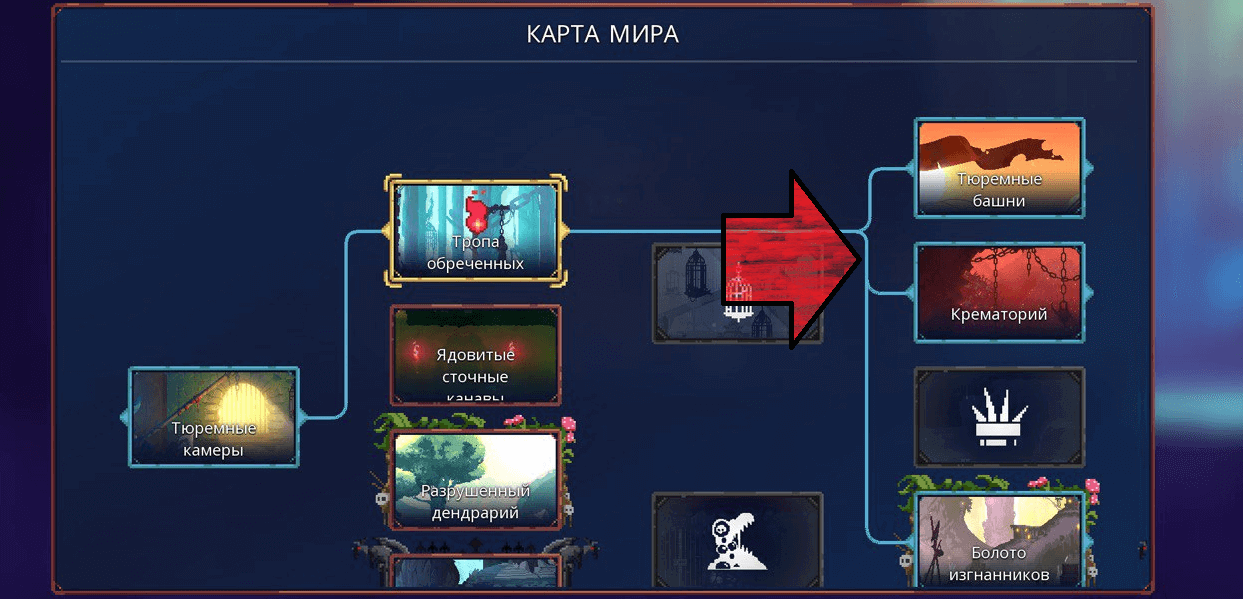
To get to many locations, you will need Runes. These Runes are scattered throughout the world so that the player won't find any Rune and immediately open its path to the next location. To get all the Runes, you will have to choose different routes, and sometimes go through the game just for one Runa. But in the next runs the player can visit new locations, find new items and even open new endings. Is it interesting? Yes, because the route is a full-fledged mechanic. You can take a weapon that hits the area, get into locations with rare but strong opponents and screw up the playthrough. That said, it all coexists with permanent death, random items and power-ups, bosses, and all the things Rogue-lite is loved for...
Lore and the World of Dead Cells
Dead Cells takes place on a mysterious island during an equally mysterious pandemic. All of the inhabitants of the unnamed continent begin to mutate, go crazy, die, and turn into monsters. The island is ruled by a King, but he failed in his duties. The King acted cynically and stupidly: he ordered his inner circle to isolate the uninfected, execute the sick, burn the corpses of the dead. But the King was too late. The sickness had already spread in the gutters, in the air, through the meat of the cattle and into the wombs of the inhabitants. The King's inner circle was a little luckier-they distanced themselves from everyone, some mutated, some began to fight among themselves, and some remained loyal to the King. Except that the King withered.
We get to play as a homunculus named Bob. Bob doesn't have a body of his own. Bob is a blob of incomprehensible slime, that moves into a new body every time the player dies. But in the game industry, Bob is better known by the nickname Headless.
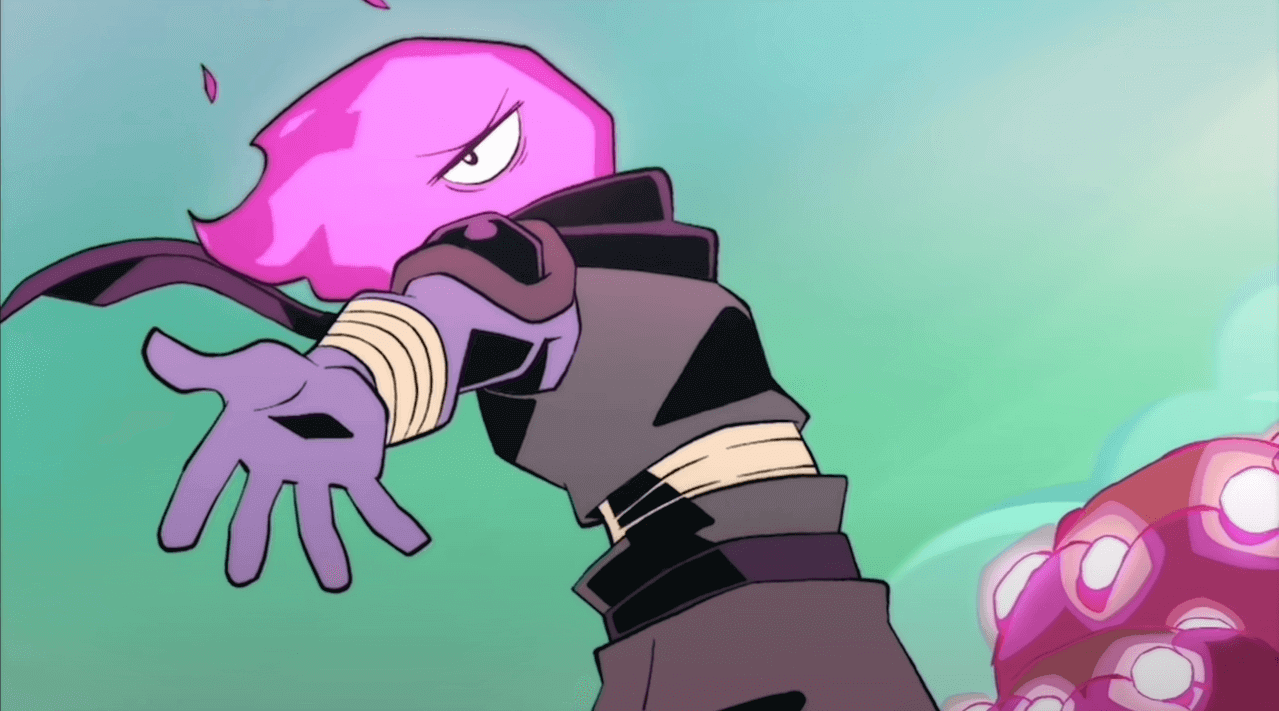
Bob has no memory of his past, but is obsessed with one goal: to kill the King and his servants.
The character of Headless Bob is a separate meme. He is very expressive, funny, pragmatic and loves to make jokes. The French developers at Motion Twin were able to give Headless a character, although Bob has no voiceover, no backstory, and not even a sane motivation to stop the king. To keep it simple, Bob is an amazing mix of Aladdin's adventurism, Nathan Jake's thirst for risk, Bill Murray's doom from Groundhog Day, and Swordsman's amnesia from S.T.A.L.K.E.R.
I remembered the Swordman for a reason. Both Bob and the Swordman turn out to be quite different characters than they seemed at first glance...
But the island is not only inhabited by monsters, the King, his minions and Bob. Some civilians are lucky to survive. For example, this green weirdo here was once an islander, but after the epidemic he became a merchant.
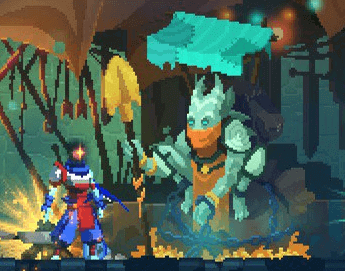
This greenish weirdo is not alone, there's a whole group of them on the island. They all meet as you go along and help Bob achieve his goal, sometimes asking for help. But there is one weirdo who pretends to be someone other than he really is...
There are many theories swirling around the world of Dead Cells. The community is constantly theorizing about who's who. Sometimes the developers are either tactically silent about the theories put forward, or dispel them immediately.
Since 2018, with each update, the Dead Cells story has expanded and fleshed out new details. All because some questions remain unanswered to this day. "Why does Bob go back to the beginning of the journey every time after killing the Hand of the King, if after that event the madness on the island was supposed to stop?", "Where did each of the weirdos come from?", "How did the epidemic start on the island?", "Are the events of Dead Cells a continuation of the Mario plumber story?" and most interestingly, "Is the Dead Cells world not a metaclass universe? For how do you explain the canonical appearance of Dracula?"
If you like all sorts of conspiracy theories, independent investigations, and your deduction would be the envy of Sherlock Holmes himself, the Dead Cells plot will be a pretty good puzzle for you. If you came here just for the gameplay, you have already read all the necessary information about the story in this article.
Settings for Comfortable Playing
The first thing you should understand before starting the game: Dead Cells is Dota 2 from the world of Rogue-lite. Just like in Dota 2, in Dead Cells it's not so much the items that are important, but how to use them. Timings, knowledge of your opponents' movements, and the ability to adapt to the situation in the game also play a big role. It is unlikely that you will be able to adapt and meet the timings from the first minutes of the game, this will come with experience.
If you have a gamer mouse with side buttons, I advise you to put buttons "Skill 1" and "Skill 2" on the side buttons of the mouse. You will not use all sorts of grenades, traps and active abilities very often, but they must be pressed strictly in time. Especially this rule is relevant during battles with bosses. They will test your strength.
Buttons jump, sight and impact weapon I recommend to put on the buttons that you are already used to using in other games. That is, jump on the "Space", examine on the NumPud or arrows, and blows - on the left and right mouse buttons. If your mouse has been around for a year or so, the wheel has been destroyed by Counter-Strike, don't use the wheel to control Dead Cells at all.
It's much easier: a couple of settings in the game menu. Go into Dead Cells, open "Settings", go to the column "Video":
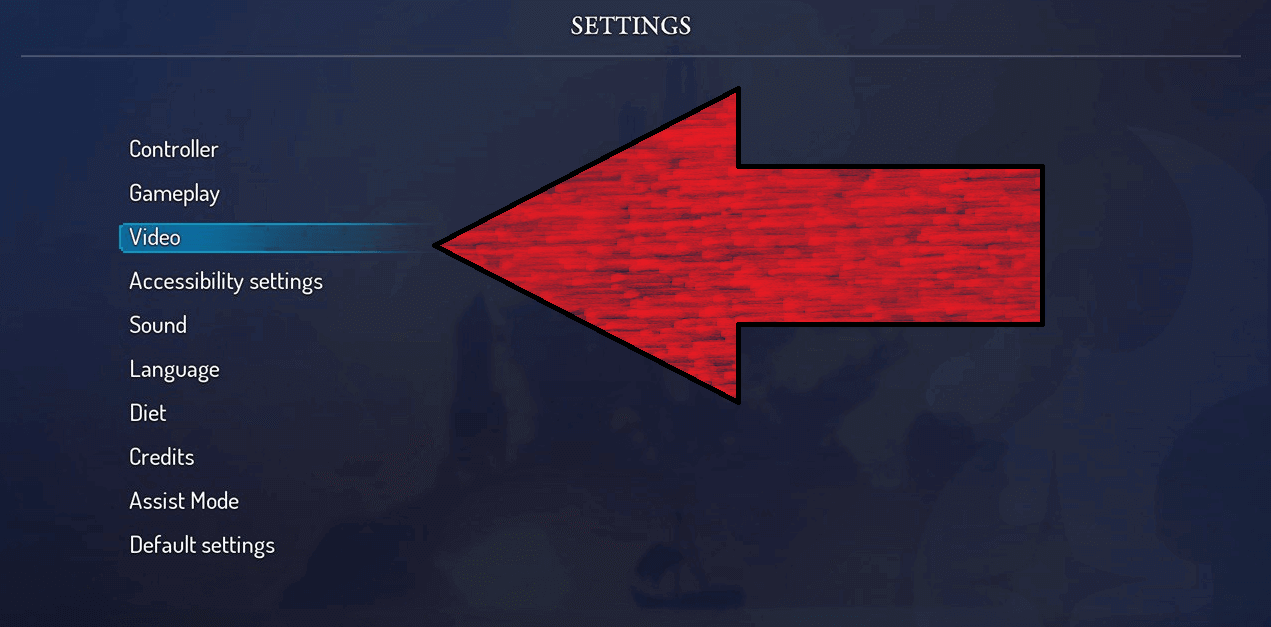
And turn on the item "Show the number of enemies killed without a single blow."
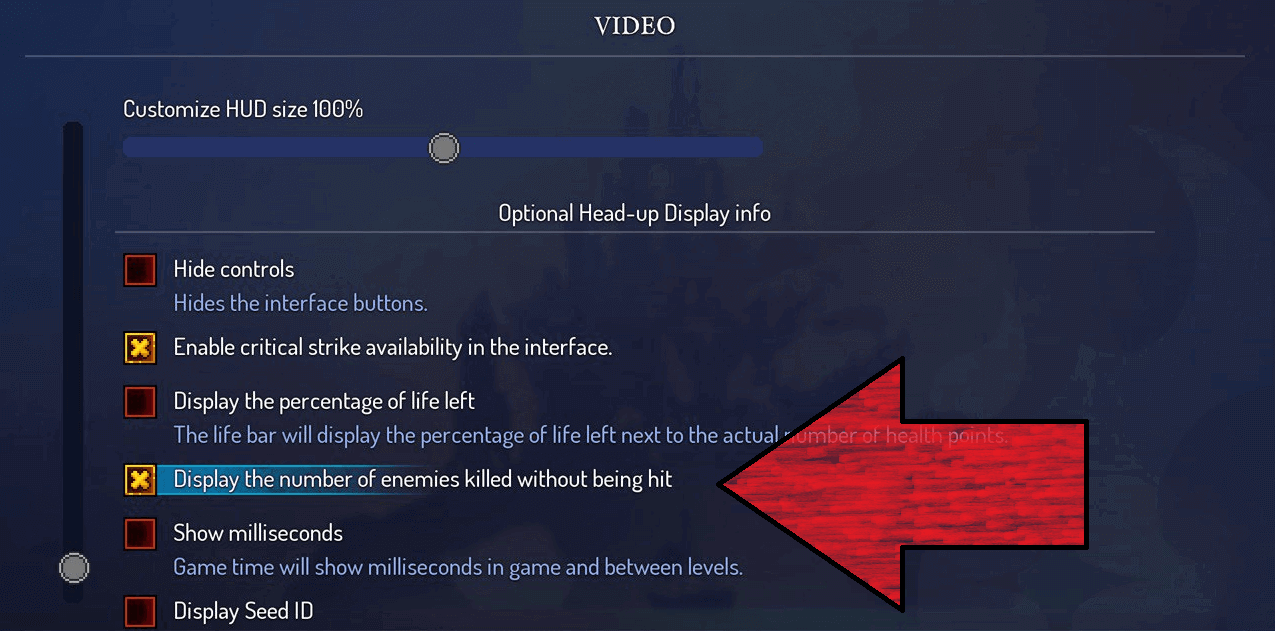
Why? In the passages between the rooms Headless encounters two doors: one for fast timed passage, the second - for a certain number of kills without damage. In the first location, the Prison Chambers, you need to kill 30 monsters without damage, in the next - 60 monsters.
If you successfully complete the side task, you'll find some gold, cells and three random items to choose from in the room, which will be 1 level higher than the level items. If you are lucky and the item turns out to be the right one, your chances of completing the run will increase slightly. This counter is in the bottom right corner of the screen and looks like this:
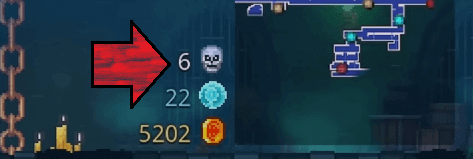
The second mandatory setting, especially relevant to newcomers, is the highlighting of secret zones. The secret zones contain blueprints, sometimes food, and sometimes keys. We need blueprints to unlock new items, food to heal, and keys to open new routes.
Go to "Settings", then go to "Accessibility Settings"...

And turn on "Visibility of secret zones":

The third setting that you will find extremely advantageous to turn on is the "Secrets Contour. All locations have valuables or food buried in the walls and floor. To see these secrets without highlighting, you have to study everything carefully, literally everything. Eventually there will be one nasty timer in the game, and you won't have time to do it.
You'll also encounter Portals of Trials, where you'll be given some cells, an amulet, and a scroll at the beginning of a short trial. In these portals you have to go from point A to point B, avoiding traps. It's a hassle, but it would be a mistake not to enter such a Portal.
I'll describe what cages are, what amulet is for, and why you need to collect scrolls, in the second and third parts of the big guide. For now just take my word for it - these are very, very useful items.
Go to Dead Cells settings, then to Accessibility Settings, and look for "Secret Contour," and turn it on:
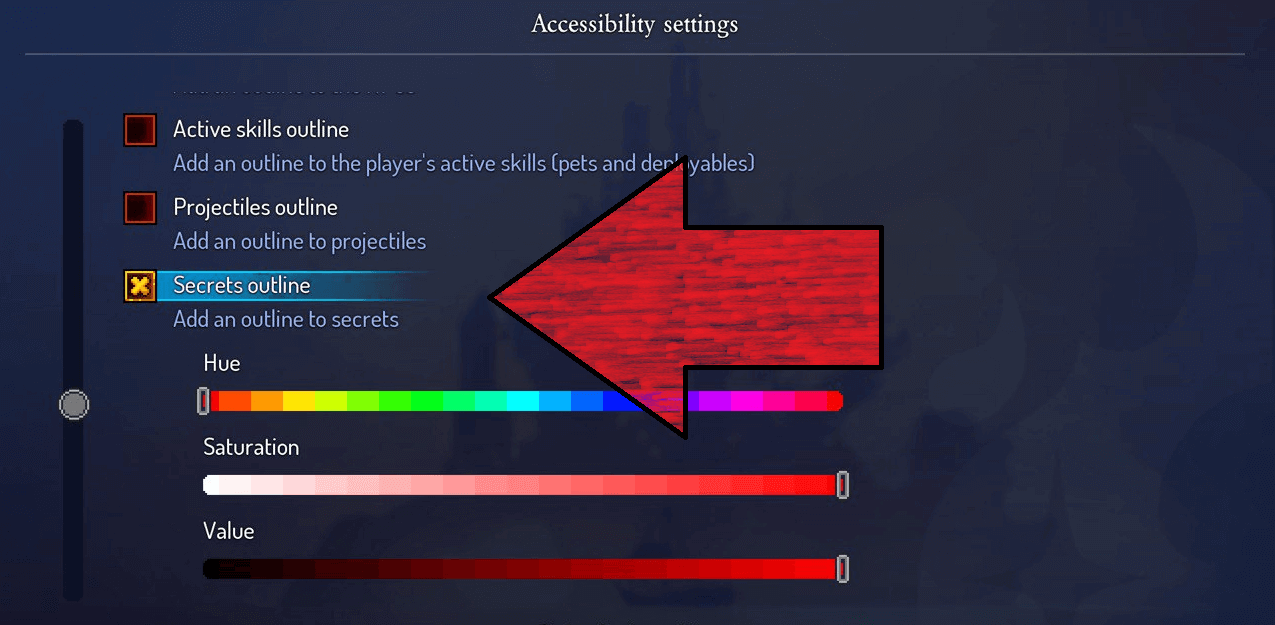
The unlit secrets look like this:
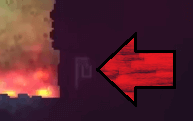
The nuance is that the secret icon begins to glow dimly either when a Headless man comes very close to that secret, or flashes red when a Headless man has dealt damage to the secret area. In both cases these secrets are hard to spot, and without them you lose gold and food. This is what a secret area looks like if you turn on the "Secret Contour" setting:
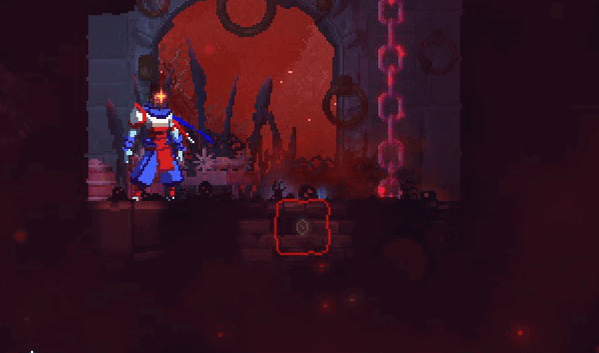
The Runa symbol on the screenshot is the secret to the Portal Challenge. Go in boldly, but first try to rack up 60 kills without taking damage.
Is it time to start...?
I have to be honest: it took me a long time to get ready before I started playing Dead Cells. I went through a dozen Rogue-lite in a row, read and watched the guides, listened to advice from experienced players. At first I even compared, what was more comfortable to play on: a keyboard and mouse or a gamepad. What's written in this article is what I got from my own experience. And everything written here is comparable to learning how to play any of the games. We are taught what buttons to press, how to defeat the first opponent, and the mechanics of the game. But none of the tutorials teach us the most important thing: nuances.
Those nuances will be in the second part of this article. If you want to make your own mistakes, try, win and lose, then the information in this article will be enough for you. But if you want to get the most comfortable start in Dead Cells, then go to the second part of "First Steps in Sick Island"...
